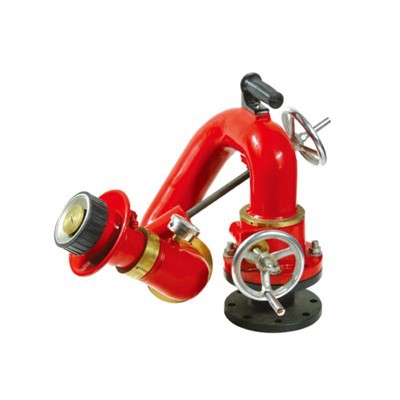Hey there! As a supplier of Automatic Extinguishers, I've seen my fair share of malfunctioning units. It can be a real headache, but don't worry – I'm here to walk you through how to troubleshoot these issues.
1. Initial Checks
First things first, when you notice that your automatic extinguisher isn't working as it should, start with some basic visual inspections. Check the exterior of the extinguisher for any obvious signs of damage, like dents, cracks, or leaks. A damaged casing can lead to all sorts of problems, including a loss of pressure or a blocked discharge mechanism.
Also, take a look at the pressure gauge if your extinguisher has one. A low - pressure reading could indicate a leak or that the extinguisher is due for a recharge. If the gauge shows that the pressure is in the green zone, it's a good sign, but that doesn't rule out other issues.
2. Check the Activation Mechanism
Most automatic extinguishers are designed to activate when they detect heat or smoke. If it's not activating, the first thing to do is to test the sensor. Some extinguishers have a test button that you can press to see if the sensor responds. If there's no test button, you might have to use a heat source (safely, of course) to see if the extinguisher activates.
Be careful not to use a heat source that's too intense or that could start a real fire. A simple hair dryer on a low setting can sometimes do the trick. Point the hair dryer at the sensor for a few minutes and see if the extinguisher goes off. If it doesn't, there could be a problem with the sensor itself.
3. Look for Blockages
Blockages are another common cause of malfunctioning automatic extinguishers. Check the nozzle and the discharge tube for any debris or obstructions. Sometimes, dust, dirt, or even insects can find their way into these parts and prevent the extinguishing agent from flowing properly.
You can use a small brush or compressed air to clean out the nozzle and tube. Just make sure you follow the manufacturer's instructions when doing this. If you're not sure, it's better to contact a professional.
4. Battery and Power Issues
If your automatic extinguisher is battery - powered, check the batteries. Dead or weak batteries can cause the extinguisher to malfunction. Replace the batteries with fresh ones and see if that solves the problem.


For extinguishers that are hard - wired into an electrical system, check the power connection. Make sure the plug is securely inserted and that there are no loose wires. You might also want to check the circuit breaker to see if it has tripped.
5. Recharge and Maintenance
Even if you've fixed the immediate issue, it's important to consider the long - term maintenance of your automatic extinguisher. Extinguishers need to be recharged periodically, depending on the type and usage.
If your extinguisher has been discharged, even partially, it needs to be recharged. You can do this yourself if you have the right equipment and knowledge, but it's often best to have it done by a professional. A professional can also perform a more thorough inspection and make sure that the extinguisher is in good working condition.
Different Types of Extinguishers
When it comes to choosing the right automatic extinguisher, there are different types available. For example, the American Style Foam Fire Extinguisher is great for certain types of fires, like those involving flammable liquids. It works by creating a foam blanket that smothers the fire and prevents oxygen from reaching it.
The Small Fire Extinguisher is perfect for use in small spaces, like offices or kitchens. It's easy to handle and can quickly put out small fires before they get out of control.
If you need something more portable, the Portable Foam Fire Extinguisher is a good option. You can take it with you in your car or use it in outdoor settings.
Conclusion
Troubleshooting a malfunctioning automatic extinguisher can be a bit of a process, but by following these steps, you can often identify and fix the problem. Remember, safety is always the top priority. If you're not comfortable troubleshooting the extinguisher yourself, don't hesitate to call in a professional.
At our company, we're not only here to supply you with high - quality automatic extinguishers but also to provide you with the support you need. If you have any questions about troubleshooting, maintenance, or if you're looking to purchase a new extinguisher, feel free to reach out. We're happy to help you find the right solution for your fire safety needs.
References
- Fire Extinguisher Handbook, National Fire Protection Association
- Manufacturer's manuals for automatic extinguishers





